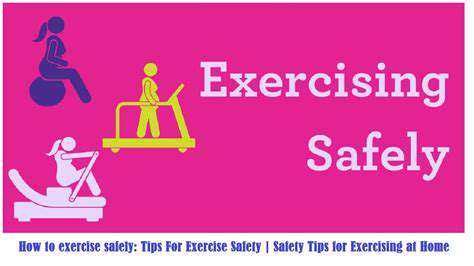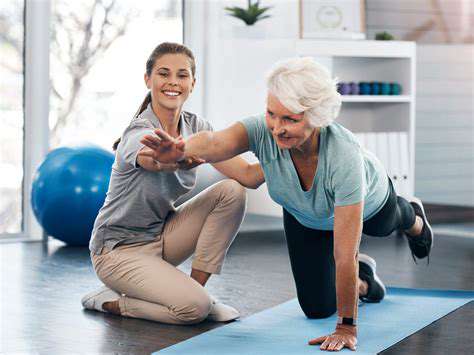Combining Calcium and Exercise for Stronger Bones
Optimizing Diet for Strong Bones
A balanced diet rich in calcium and vitamin D is fundamental to bone health. Calcium is crucial for bone formation and maintenance, while vitamin D aids in calcium absorption. Dairy products, leafy green vegetables, and fortified foods are excellent sources. However, it's not just about the quantity of these nutrients; it's also about the overall nutritional profile of your meals. A diet rich in fruits, vegetables, and lean proteins provides essential vitamins and minerals that support bone health and overall well-being.
Consider incorporating foods rich in magnesium, phosphorus, and vitamin K. These nutrients play a vital role in bone metabolism and mineralization, contributing to stronger, denser bones. It's important to consult with a registered dietitian or healthcare professional for personalized dietary recommendations based on your individual needs and health conditions.
The Impact of Weight-Bearing Exercise
Weight-bearing exercises, such as walking, jogging, dancing, and stair climbing, are particularly beneficial for bone health. These activities stimulate bone tissue formation and increase bone density. The impact of your body weight on the bones during these exercises encourages the body to build and strengthen them. Regular participation in weight-bearing activities helps maintain bone density and reduces the risk of osteoporosis, a condition characterized by weakened bones.
The Role of Vitamin D
Vitamin D is vital for calcium absorption, and inadequate levels can lead to weaker bones. Sunlight exposure is a natural source of vitamin D, but dietary sources like fatty fish, egg yolks, and fortified foods are also important. Vitamin D supplementation might be necessary for individuals who don't get enough sun exposure or have dietary limitations. It's crucial to maintain adequate levels of vitamin D for optimal bone health and overall well-being. This nutrient plays a significant role in various bodily functions beyond bone health.
Maintaining a Healthy Weight
Maintaining a healthy weight is important for overall health, including bone health. Obesity can put extra stress on bones, potentially increasing the risk of fractures. Conversely, being underweight can also negatively impact bone density. Achieving and maintaining a healthy weight through a combination of a balanced diet and regular exercise contributes to the overall strength and resilience of your skeletal structure. This contributes to preventing bone-related issues later in life.
The Importance of Adequate Protein Intake
Protein is essential for bone health, as it's a crucial component of bone tissue. Protein-rich foods like lean meats, poultry, fish, eggs, and dairy products contribute to bone density and strength. Adequate protein intake ensures the body has the necessary building blocks to maintain and repair bone tissue, reducing the risk of fractures and bone-related issues. Paying attention to protein intake is key to supporting bone health and overall well-being.
Stress Management and Bone Health
Chronic stress can negatively impact bone health. Stress hormones can interfere with bone remodeling, potentially leading to decreased bone density. Effective stress management techniques, such as regular exercise, meditation, yoga, and spending time in nature, can help mitigate the negative effects of stress on bone health. These activities reduce stress hormones, promoting overall well-being and bone health.
Sleep and Bone Health Connection
Adequate sleep is crucial for overall health, including bone health. During sleep, the body repairs and rebuilds tissues, including bone tissue. Chronic sleep deprivation can disrupt this process, potentially leading to reduced bone density and increased fracture risk. Prioritizing sufficient sleep helps maintain optimal bone health by allowing the body to effectively repair and rebuild bone tissue while you rest. Aim for 7-9 hours of quality sleep per night for optimal bone health.










